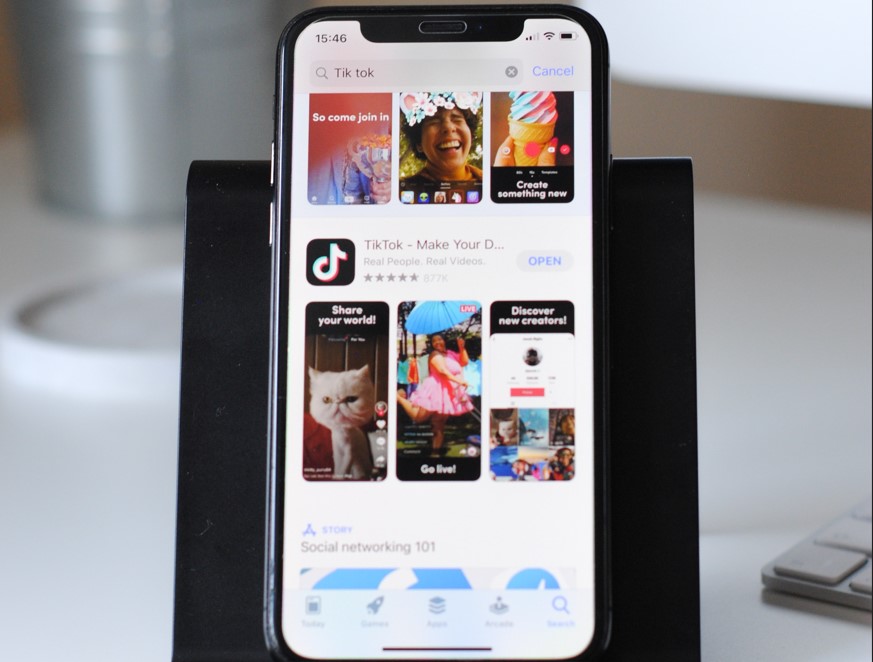Software
TikTok discovers time limits
Every account belonging to a user under 18 years will automatically be set to a 60-minute daily screen time limit.
TikTok has finally taken direct responsibility for the addictive nature of the video sharing platform and its impact on teenagers.
Research by the video sharing giant indicates when people are more aware of how they spend their time, they can be more intentional about their activity. Consequently, it has announced well-being features for teens, families and its broader community. These are underpinned, it says, “by its belief that digital experiences should bring joy and play a positive role in how people express themselves, discover ideas and connect.”
And, as a result, the entertainment platform is improving its screen time controls with more custom options, introducing default settings for teen accounts, and expanding Family Pairing with more parental controls.

Cormac Keenan, TikTok head of trust and safety, says: “In the coming weeks, every account belonging to a user under 18 years will automatically be set to a 60-minute daily screen time limit. “When deciding on a feasible amount of screen time for teens, we consulted the current academic research and experts from the Digital Wellness Lab at Boston Children’s Hospital.”
“While there’s no collectively endorsed position on how much screen time is ‘too much’, or even the impact of screen time more broadly, we recognise that teens typically require extra support as they start to explore the online world independently.
“If the 60-minute limit is reached, teens will be prompted to enter a passcode to continue watching, requiring them to make an active decision to extend that time.”
Keenan says TikTok is also prompting teens to set a daily screen time limit if they turn off the 60-minute default and spend more than 100 minutes on TikTok in a day.
“In our first month of testing, this approach increased the use of our screen time management tools by 234%. And, we’ll send every teen account a weekly inbox notification with a recap of their screen time.”
These features add to TikTok’s robust existing safety settings for teen accounts. For instance, those aged 13-15 have their accounts set to private by default, enabling them to make informed choices about what they choose to share, when, and with whom. Direct messaging is only available to those age 16 and older and to host a LIVE, community members must be at least 18.
TikTok provided the following information on new features:
Helping families have conversations about digital well-being.
When teens need support, parents or caregivers are often the first people they can turn to, making them one of TikTok’s most important partners. As it continues to innovate on how to empower families, it is adding four new features to Family Pairing:
- Custom daily screen time limits: Caregivers will be able to use Family Pairing to customise the daily screen time limit for their teens – including choosing different time limits depending on the day of the week – giving families more choices to match screen time to school schedules, holiday breaks or family travel.
- Screen time dashboard: TikTok is bringing its screen time dashboard to Family Pairing, which provides summaries of time on the app, the number of times TikTok was opened, and a breakdown of total time spent during the day and night. From its recent research, TikTok knows screen time is one of the topics parents most frequently discuss with their teens, and the entertainment platform wants to support caregivers with relevant information to help them guide their teens.
- Mute notifications: Notifications help people to stay connected, but there are times when it’s important to be uninterrupted. TikTok is introducing a new setting that enables parents to set a schedule to mute notifications for their teens. Currently, accounts aged 13-15 do not receive push notifications from 9pm and accounts aged 16-17 have push notifications disabled from 10pm.
- New content controls: TikTok is cognisant that caregivers would like more oversight of the content their teens engage with, and the business is in the early stages of developing a way for caregivers to filter videos they don’t want their teen to watch with words or hashtags.

“We want to provide families with controls to make decisions based on their individual needs, and we also recognise the importance of doing so with careful consideration for both parents and teens. Over the next few weeks, we’ll continue to engage with parenting, youth, and civil society organisations to design this feature,” adds Keenan.
Every teen is different, and so is every family. That’s why TikTok remains focused on reaching parents with the information they need about TikTok. It does this through partnerships with creators, industry experts, and advertising campaigns focused on safety features.
TikTok will continue to surface Family Pairing information to some of its users in-app to help them understand the options that may be useful to them or someone they know. It hopes these features will continue to help families establish an ongoing dialogue about safety and well-being in the digital world.
New screen time controls for everyone
“We want our community to feel in control of their TikTok experiences,” says Keenan. “In addition to bringing these new features to Family Pairing, everyone will soon be able to set their own customised screen time limits for each day of the week and set a schedule to mute notifications.”
“Moreover, we’re rolling out a sleep reminder to help people more easily plan when they want to be offline at night. People can set a time, and when it’s reached, a pop-up will remind them it’s time to log off.
“We’ll continue to invest in improving our current features as well as introducing new tools to help people stay in control as they express their creativity, make meaningful connections, and enjoy culture-defining entertainment,” said Keenan.



















